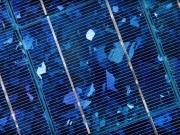
The Swedish research team have published the results of their study in the journal Science in which they show how they have managed to achieve an efficiency level of 13.8 percent using nanowires. The scientists believe this result could pave the way for even more efficient solar cells.
“Our findings are the first to show that it really is possible to use nanowires to manufacture solar cells” said Magnus Borgström, the author of the research paper and a specialist in semiconductor physics. “The right size is essential for the nanowires to absorb as many photons as possible. If they are just a few tenths of a nanometre too small their function is significantly impaired.”
The benefits of using nanowires to improve solar cell efficiency is something that is increasingly popular across the globe as a subject of new solar cell research. Other research, carried out alongside that pertaining to nanowires, aims to combine different types of semiconductor material in order to make efficient use of a wider part of the solar spectrum. The problem with this is solar cells produced in this manner are incredibly expensive and can only be used for niche purposes such as on satellites. This isn’t the case with nanowires and thus solar cells could in theory be produced with much less effort thereby making them less expensive to manufacture.
The nanowires used by the Swedish research team were made of indium phosphide. They operate much in the same way as antennae and are installed on surfaces measuring one square millimetre, each capable of containing some four million nanowires. The result is a solar cell that is capable of generation activity several times greater than currently produced solar cells. Nanowire-equipped solar cells have yet to make it beyond the laboratory but researchers are hopeful they could one day be used to equip large solar plants in sunny regions such as the south west USA, southern Spain and Africa.
The Swedish research was funded through the EU’s AMON-RA project and co-ordinated by Knut Deppert, Professor of Physics at Lund University, who hopes to achieve even higher levels of efficiency with continued research.
Further information:

